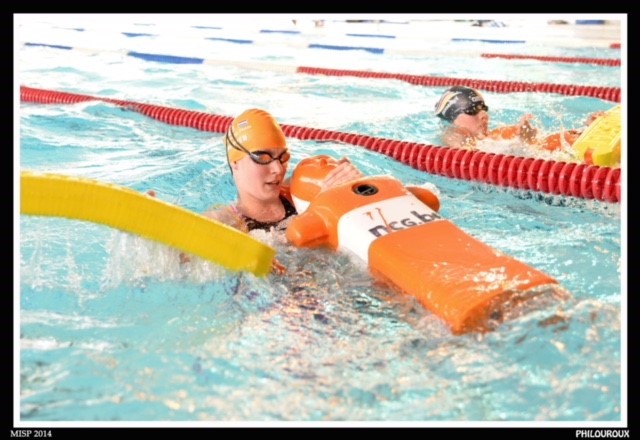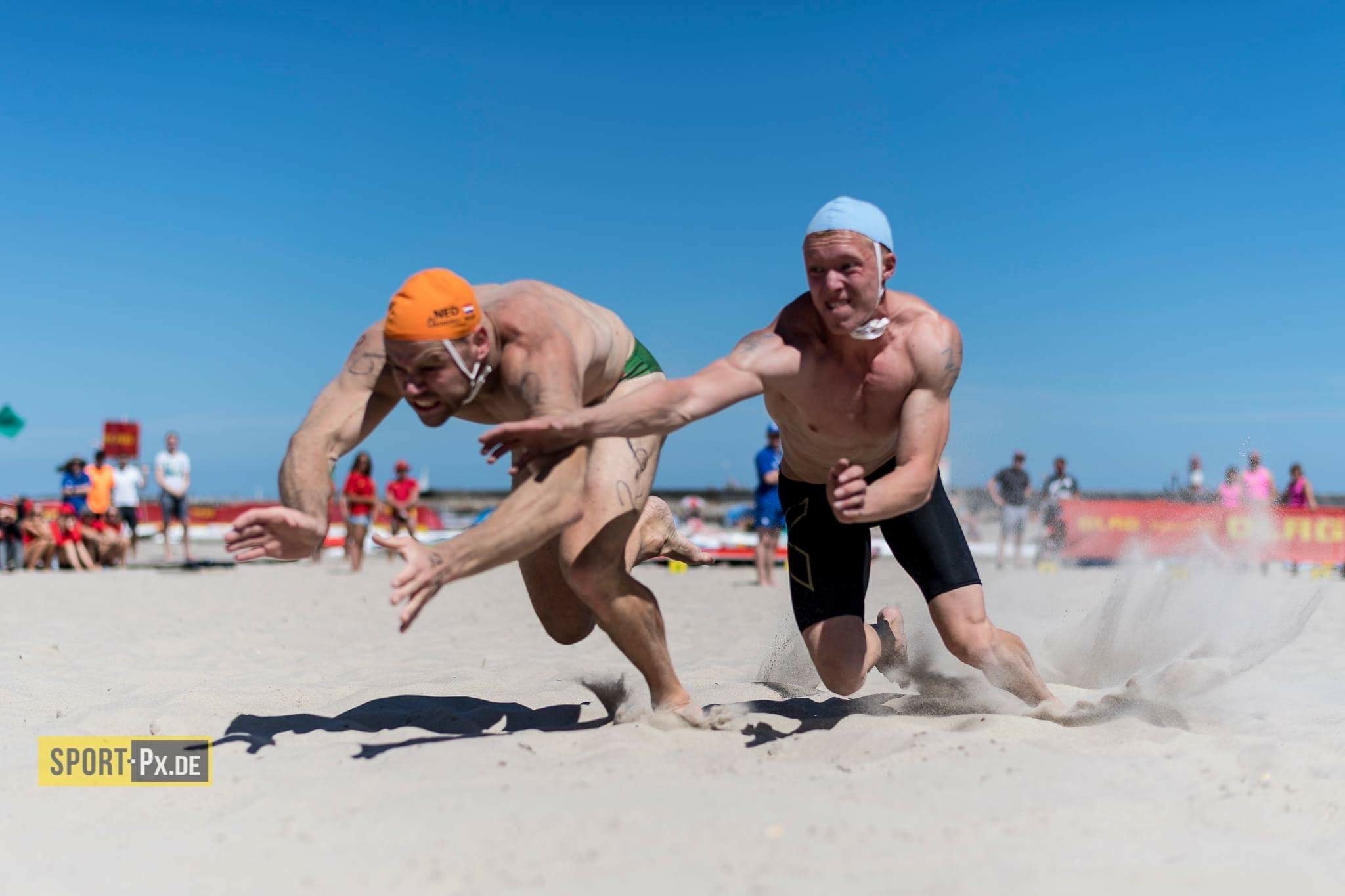1
Trainer - Task 2.2.3 - Guiding during training sessions: Lifesaving (optional)
Trainer - Task 2.2.3 - Guiding during training sessions: Lifesaving (optional)
Content
Lifesaving is the competitive sport of the Royal Dutch Lifeguard Federation. It is a sport practiced both in the swimming pool and in open water or the sea, with individual events and relays. As a trainer, you teach children of all ages the various events they are allowed to participate in competitively at their age. In the swimming pool, you teach them to:
- Swim well with and without fins.
- Retrieve rings or manikins from the bottom of the pool.
- Transport manikins while tightly sealed in a torpedo.
- Swim under obstacles.
- In relay races, you teach athletes to pass rings or manikins to each other.

Outside, there are several events:
- on the beach, such as beach sprints and beach flags (see photo),
- as well as a large number of events in the surf or at the water's edge.
- You teach children how to navigate boards,
- as they get older, how to use a ski (unsinkable kayak).
- You also teach children how to swim in the waves.

In short, it's a very diverse and challenging program. As a trainer 2, you primarily focus on the basic techniques of swimming, boarding, and technical skills such as securing a manikin in a torpedo. You teach children the components of the competitive sport that they are allowed to participate in at their age. As a trainer, you teach them to prioritize safety for themselves and others, as well as teamwork, because even in individual events, assistance is often required.
Get activity badge
LifesavingTechnician Get this badge
If you have earned this badge, you can teach children the basics of the components and ingrain them:
- in the pool,
- on the beach,
- in open water
Tasks
Task no.1
Issued by organiser or scanning QR code
Learning to provide training to young aspirants and juniors.
Organisers
ExpeditieRED
Badge issuer recognized with
Used in playlists
Trainer Competitive Swimming
ExpeditieREDAwero not-for-profit organisation manages this platform and develops it together with leading educational organisations. The European Union's programme Erasmus+ granted co-funding for building the first version of this platform. Contact support@awero.org.
Platform
Change to another language:
